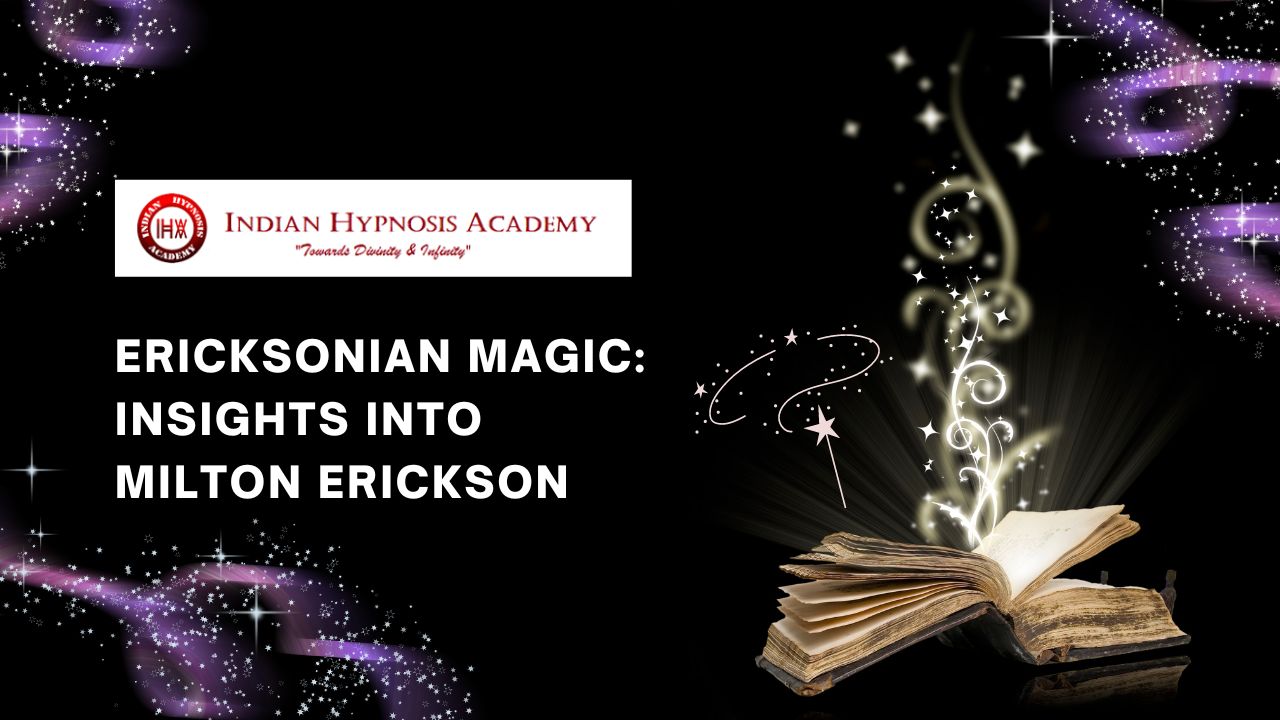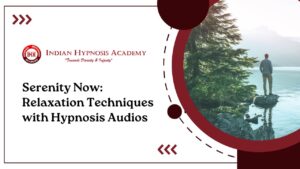Introduction to Milton Erickson
Unlock the secrets of Ericksonian Magic and delve into the intriguing world of Milton Erickson, a legendary figure in the field of psychology and communication. Known for his innovative approach to therapy and captivating storytelling techniques, Erickson left an indelible mark on the world of psychotherapy. In this blog post, we’ll explore the life and career of Milton Erickson, uncovering his principles, techniques, applications, as well as addressing some criticisms surrounding his work. Prepare to be amazed as we unravel the enigmatic brilliance behind Milton Erickson’s transformative methods! So grab a coffee or tea (or your beverage of choice) and let’s embark on this fascinating journey together!
The Life and Career of Milton Erickson
Milton Erickson, a man whose life and career left an indelible mark on the field of psychotherapy. Born in 1901 in Nevada, he overcame tremendous physical challenges as a child, including polio and partial paralysis. Despite these obstacles, Erickson developed a keen interest in psychology and went on to become one of the most influential figures in therapeutic practice.
Erickson’s journey took him through various academic institutions, culminating in his doctoral degree from the University of Wisconsin-Madison. However, it was his personal experiences that shaped his unique approach to therapy. Drawing from his own struggles with disability and illness, Erickson believed that every individual possessed untapped inner resources for healing and growth.
Throughout his career, Erickson developed groundbreaking techniques that challenged traditional therapeutic methods. He pioneered the use of indirect suggestion and metaphorical storytelling to bypass conscious resistance and access the unconscious mind. This approach became known as “Ericksonian Magic,” reflecting both its transformative power and its ability to captivate clients’ imaginations.
Erickson’s innovative strategies found widespread recognition within the field of psychotherapy. His work influenced countless therapists who sought to harness the innate potential within their patients. Today, Ericksonian techniques are utilized not only in clinical settings but also in fields such as business coaching, negotiation skills training, and even marketing.
While Milton Erickson’s contributions have been celebrated by many practitioners around the world, there has also been some controversy surrounding his methods. Some critics argue that his reliance on ambiguity may lead to manipulation or unethical practices if misused by less skilled therapists.
Nonetheless, it is undeniable that Milton Erickson revolutionized our understanding of human behavior and communication patterns. His legacy lives on through those who continue to study and apply his principles today.
The Principles of Ericksonian Magic
Milton Erickson was a master of using language to create change in the minds and lives of others. His approach, often referred to as “Ericksonian magic,” is based on a set of principles that underpin his unique style of therapy and communication.
One key principle is the belief in the power of unconscious processes. Erickson recognized that our unconscious mind holds immense resources for healing and growth. By bypassing conscious resistance and engaging directly with the unconscious, he could help individuals tap into their own inner wisdom.
Another principle is the importance of utilizing ambiguity and metaphor. Rather than presenting direct suggestions or advice, Erickson would often speak in metaphors or use ambiguous language. This allowed him to communicate on multiple levels simultaneously, reaching deeper parts of the mind where transformation can occur.
Flexibility was another core principle for Erickson. He believed that each individual has their own unique way of experiencing the world, so he tailored his interventions accordingly. Whether it was adapting his tone, pacing his speech, or matching someone’s preferred sensory modality (such as visual or auditory), he aimed to establish rapport and build trust with his clients.
Erickson also emphasized utilizing naturalistic trances – states we enter naturally throughout our day-to-day lives. By recognizing these moments when attention becomes highly focused or absorbed (like when watching a movie or daydreaming), he could guide individuals into therapeutic trances where positive change could take place.
Additionally, nonverbal communication played a significant role in Ericksonian magic. He paid close attention to body language, facial expressions, tone of voice – all subtle cues that convey meaning beyond words alone. By attuning himself to these signals and adjusting his approach accordingly, he established deep connections with those he worked with.
Techniques and Strategies Used by Milton Erickson
Milton Erickson was a master of his craft, known for his innovative and effective techniques in therapy and communication. His unique approach to hypnosis, known as Ericksonian Magic, revolutionized the field and continues to be widely studied and used today.
One of Erickson’s key strategies was the use of indirect suggestions. Instead of directly telling someone what to do or how to think, he would weave suggestions into stories or metaphors. This allowed the subconscious mind to absorb the information without resistance or defensiveness.
Another technique employed by Erickson was utilization. He believed that every individual has their own unique resources and strengths that can be harnessed for healing and personal growth. Rather than focusing on problems or weaknesses, he would identify and amplify these inner resources, empowering individuals to overcome challenges.
Erickson also utilized non-verbal communication cues such as body language, tone of voice, and pacing. By mirroring a person’s behavior or using similar language patterns, he established rapport quickly and created a sense of safety and trust. This facilitated deeper connections with clients during therapeutic sessions.
Furthermore, Ericksonian techniques often involved creating an element of confusion or surprise in order to bypass conscious resistance. By disrupting habitual thought patterns through linguistic ambiguity or unexpected interventions, he opened up new possibilities for change in individuals’ lives.
These are just a few examples of the many techniques and strategies used by Milton Erickson throughout his career. His ability to connect with people on a deep level while guiding them towards positive transformation is truly remarkable.
Applications of Ericksonian Magic in Therapy and Communication
Milton Erickson’s innovative approach to therapy, known as Ericksonian Magic, has had a profound impact on the field of psychology. His techniques and strategies are not only applicable in therapeutic settings but also highly effective in everyday communication.
One key application of Ericksonian Magic is in the realm of therapy. By using indirect suggestions, metaphors, and storytelling, Erickson was able to bypass clients’ conscious resistance and access their unconscious mind. This allowed for deep exploration and resolution of underlying issues that may have been difficult to address directly.
In addition to therapy, the principles of Ericksonian Magic can be applied in various communication contexts. Whether you’re negotiating with a colleague or having a heartfelt conversation with a loved one, employing these techniques can enhance your ability to influence others positively.
By utilizing language patterns that are embedded within stories or anecdotes, you can captivate your audience and create a more engaging experience. Using vague or open-ended statements allows individuals to interpret information based on their own experiences, leading to increased receptiveness and understanding.
Furthermore, mastering nonverbal communication is another essential aspect of applying Ericksonian Magic effectively. Body language plays a crucial role in conveying messages beyond words alone. Learning how to use gestures, facial expressions, tone of voice, and pacing can significantly enhance your ability to connect with others at a deeper level.
Criticisms and Controversies Surrounding Milton Erickson
Milton Erickson, like any influential figure, was not without his fair share of criticisms and controversies. One major criticism that has been leveled against him is the question of the validity and ethics of some of his techniques. Some argue that his use of hypnosis and suggestion may have crossed ethical boundaries, as it could potentially manipulate individuals without their full consent.
Another controversy surrounding Erickson relates to his unconventional approach to therapy. Traditional psychologists often criticized him for deviating from established theories and practices. His emphasis on individualized treatment plans tailored to each client’s unique needs went against the grain of standardized protocols.
Furthermore, some skeptics questioned the scientific basis behind Erickson’s methods. They argued that there was a lack of empirical evidence supporting the effectiveness of his techniques. Critics suggested that much of what he achieved might be attributed to placebo effects or other non-specific factors rather than specific therapeutic interventions.
Additionally, some raised concerns about whether Ericksonian techniques were suitable for everyone. While many people benefited greatly from his approaches, others found them confusing or ineffective.
Despite these criticisms and controversies, it is important to recognize the significant impact Milton Erickson had on the field of psychology and therapy. His innovative ideas challenged traditional notions and opened up new possibilities for understanding human behavior.
While Milton Erickson faced criticism for various aspects of his work, it cannot be denied that he made invaluable contributions to our understanding of therapy and communication strategies. Whether one agrees with all aspects or not, there is no denying the lasting legacy he left behind in shaping modern psychotherapy practices.
Conclusion: The Legacy of Milton Erickson
Milton Erickson’s impact on the field of psychology and therapy cannot be overstated. His innovative approach, known as Ericksonian Magic, revolutionized the way we understand and practice therapy. Through his remarkable techniques and strategies, he demonstrated that change can happen at a subconscious level, leading to profound transformations in individuals.
Erickson’s ability to tap into the power of language and storytelling paved the way for modern therapeutic approaches like Neuro-Linguistic Programming (NLP) and hypnotherapy. His emphasis on utilizing metaphors, indirect suggestions, and nonverbal communication has proven to be effective in creating lasting change in countless lives.
The legacy left behind by Milton Erickson continues to inspire therapists across various disciplines. His insights into human behavior have not only transformed psychotherapy but have also had a significant impact on fields such as marketing, salesmanship, negotiation tactics, leadership training, and personal development.
Despite some criticisms and controversies surrounding his methods throughout his career – from concerns about unethical practices to questions about scientific rigour – it is undeniable that Milton Erickson’s contributions have made a lasting mark on the field of psychology.
Whether you are a therapist seeking new techniques or someone interested in understanding human communication better—exploring the work of Milton Erickson can provide valuable insights into how our minds work and how we can create positive change within ourselves.




